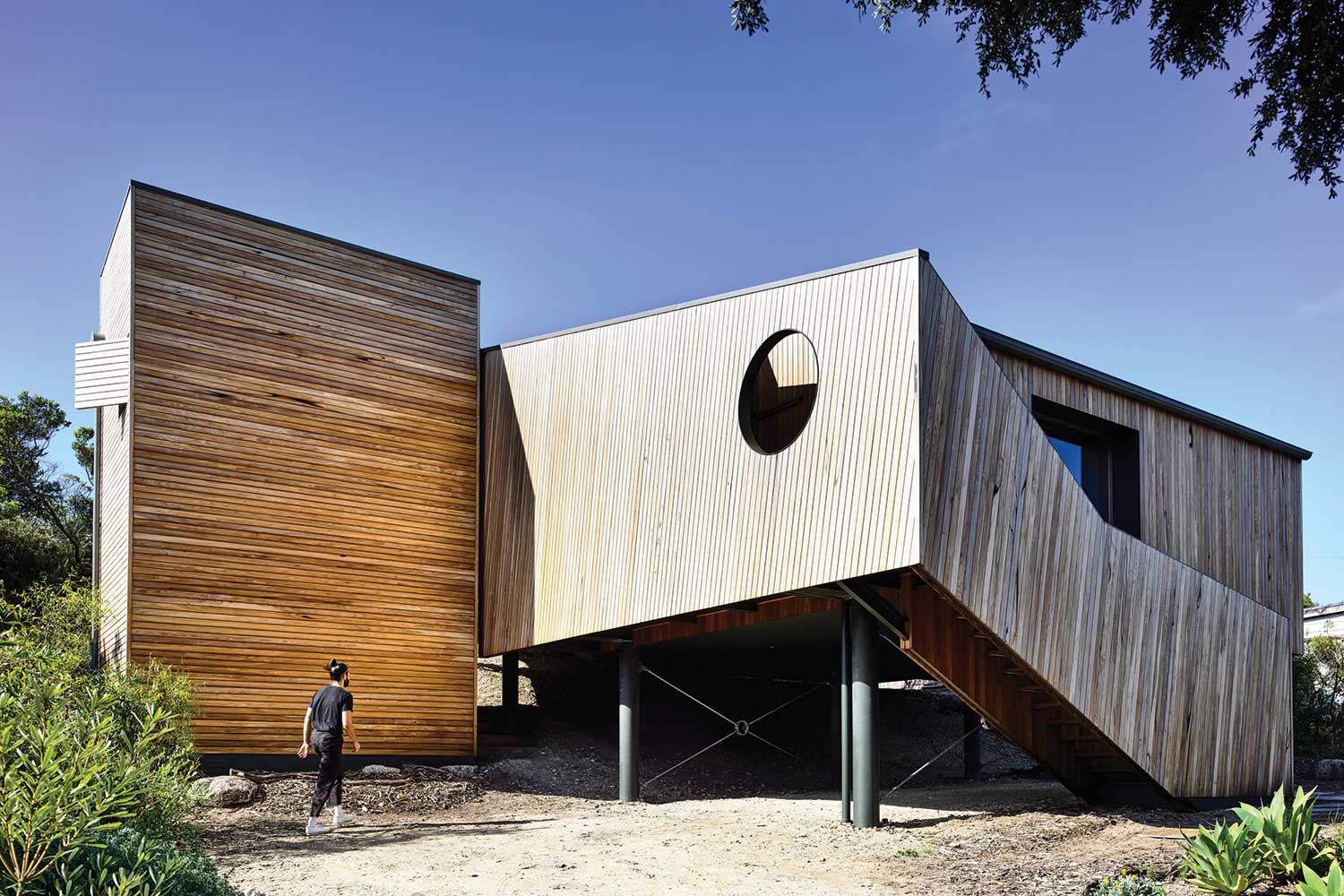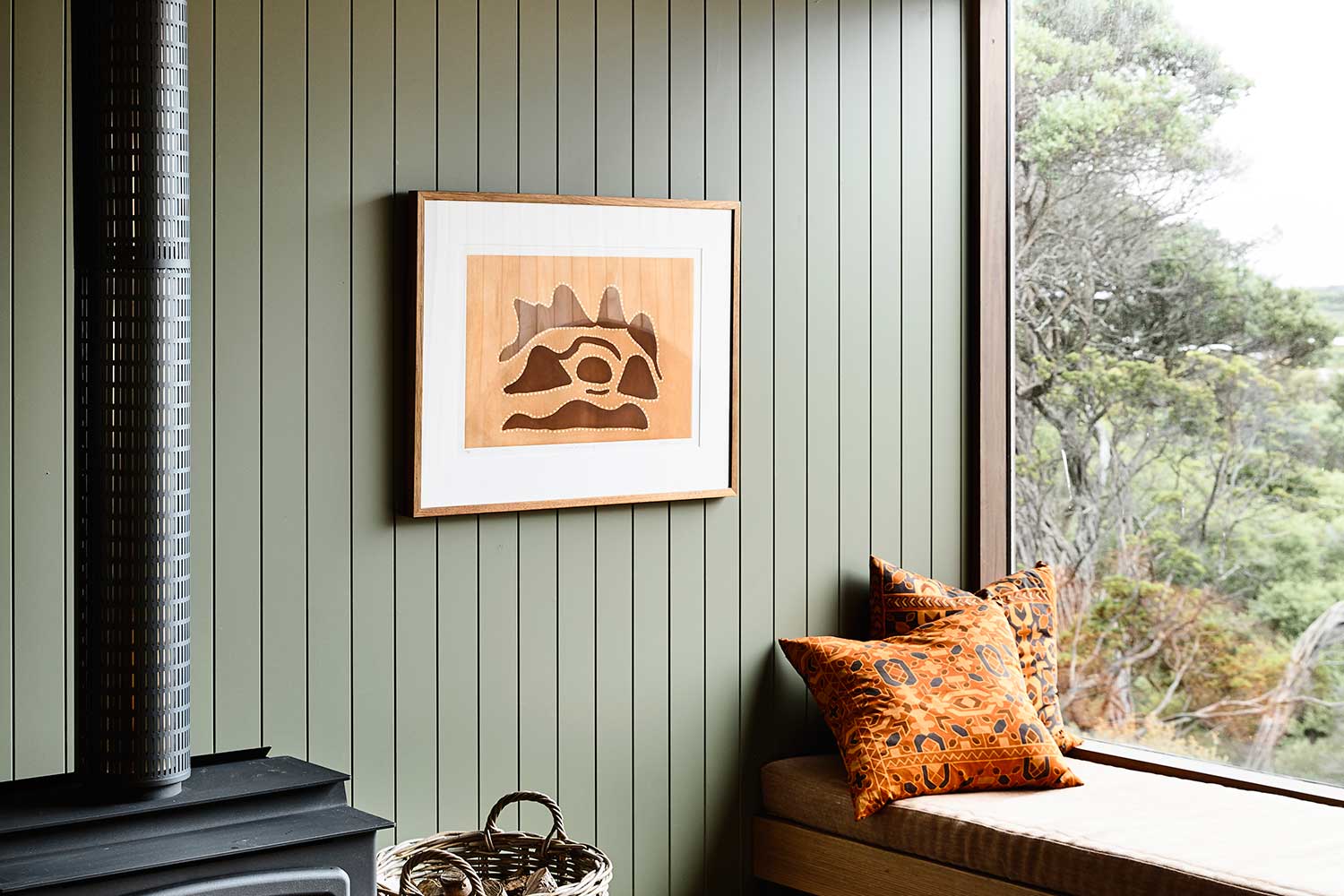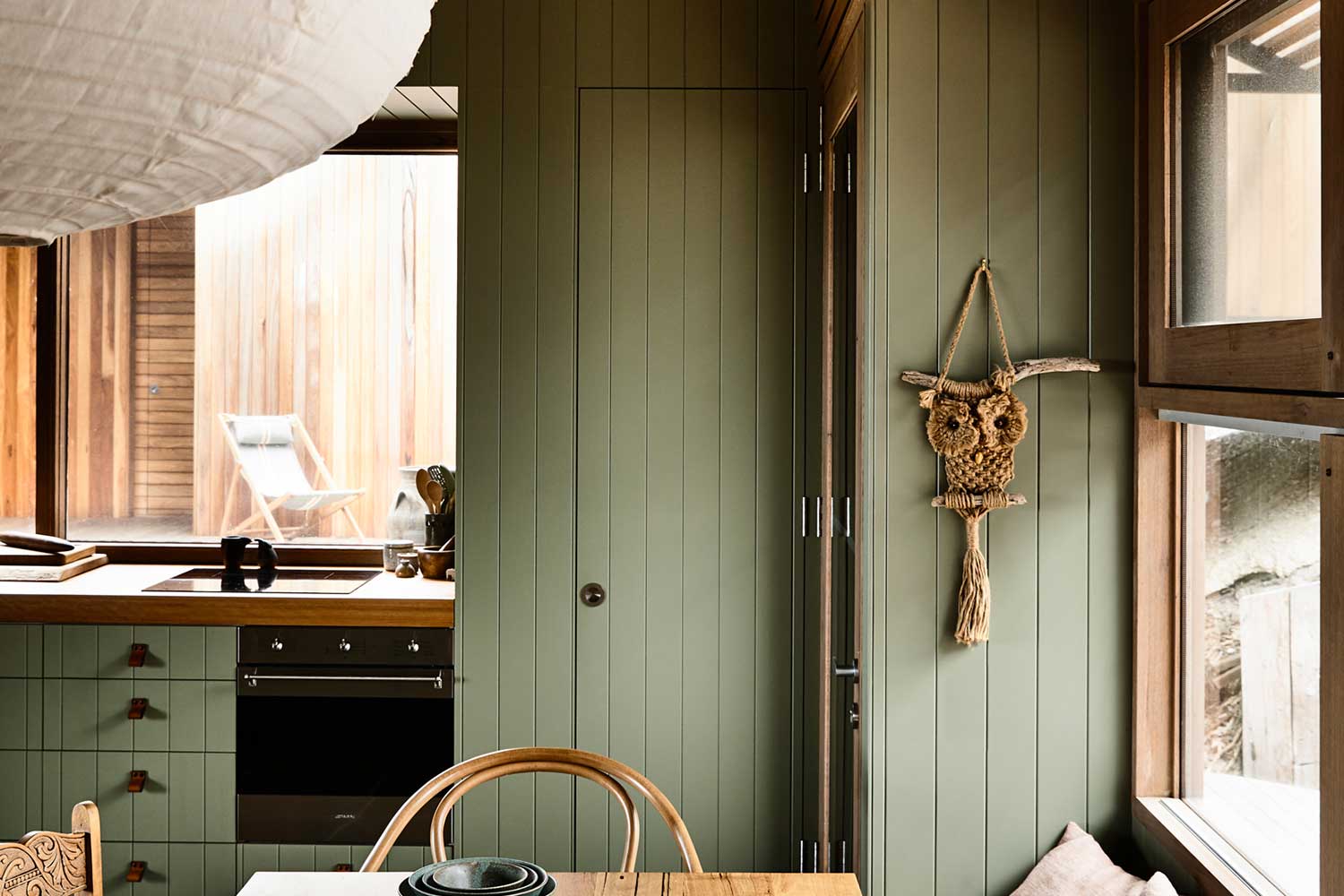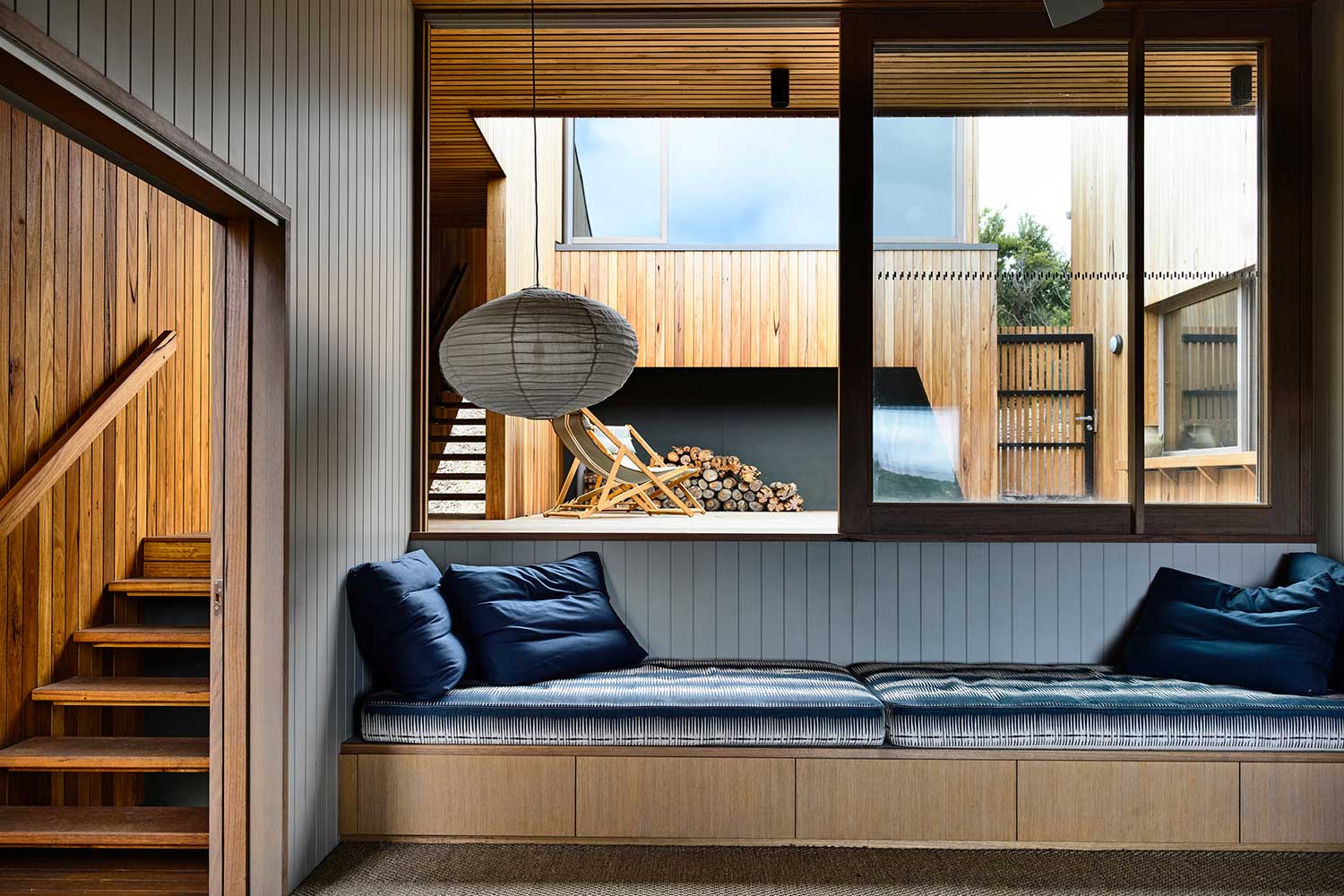Sandy Point House
Kennedy Nolan
Australia
Perched on the coastal dunes of eastern Victoria, this is a holiday house for a family that has a long association with the modest beachside hamlet of Sandy Point. Almost three hours from Melbourne, this house was designed not so much for weekends as for extended stays – in both summer and winter. The house is principally built from timber suitable to its bushfire-prone setting, ultimately designed to grey off and be camouflaged into the surrounding indigenous planting. The underlying aspiration of the design was to make a house that reflects and amplifies a genuine connection to place, which has evolved over generations of family holidays.
The design was a sort of instinctive parametric taking into account a number of considerations (multigenerational living, varid weather conditions, modest community, and security/maintenance for uninhabited periods), as well as imaginings of an ideal coastal experience. The result is a pinwheel house arranged around a protected inner courtyard. The courtyard has the characteristics of a cloister in that it provides a protected external connection between four separate zones.
The result is a sensual experience of place as you move from room to room: a view of stars, a burst of cold air, the sound of the ocean crashing. And because the rooms that spin off the courtyard are arranged to reflect the terrain of the steep site, moving through the house you are always reminded of the ground beneath your feet as you ascend or descend between rooms. The courtyard also supports a nuanced social experience in much the same way a cloister traditionally works.
The house has a strong and consistent aesthetic which has been applied to every element. The external and internal forms are carefully modelled to mediate the complex arrangement of space into a coherent visual expression.
Photography: Derek Swalwell.




